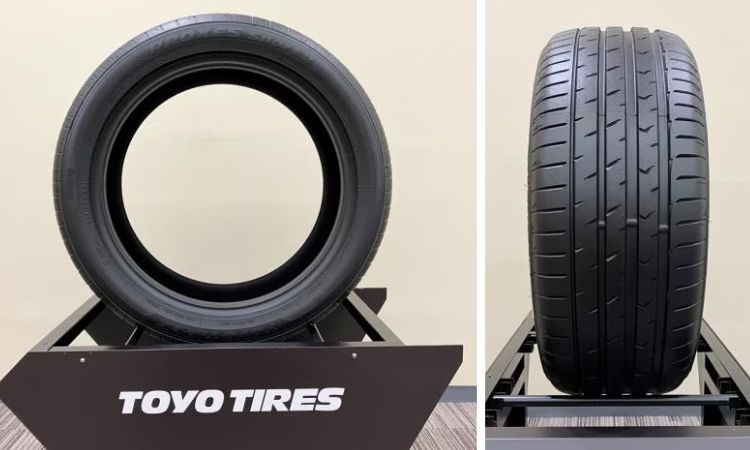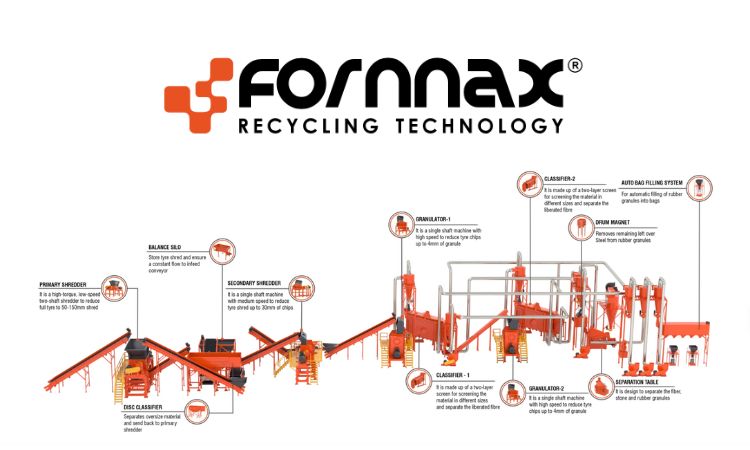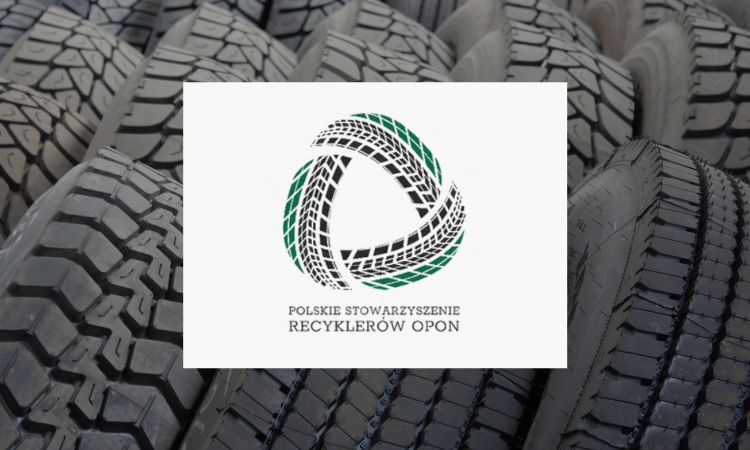Weibold Academy: Driving the circular economy – tire pyrolysis oil at a legal turning point
Weibold Academy article series discusses periodically the practical developments and scientific research findings in the end-of-life tire (ELT) recycling and pyrolysis industry.

These articles are reviews by Claus Lamer – the senior pyrolysis consultant at Weibold. The reviews aim to give industry entrepreneurs, project initiators, investors, and the public a better insight into a rapidly growing circular economy. At the same time, this article series should stimulate discussion.
For completeness, we would like to emphasize that these articles are no legal advice from Weibold or the author. Please refer to the responsible authorities and specialist lawyers for legally binding statements.
Policy Is Powering the Tire-Pyrolysis-Oil (TPO) Market
Each year, well over a billion tires worldwide reach the end of their life. Many of these discarded tires still accumulate in landfills or are burned for a one-time energy gain, creating pollution and wasting valuable materials. Tire pyrolysis, a form of chemical recycling, breaks down end-of-life tires (ELT) into useful products like oil (TPO), gas, and recovered carbon black (rCB). Across the globe – and especially in Europe and the United States – evolving legal frameworks are transforming tire-derived pyrolysis oil (TPO) into a strategic commodity. New laws and policies on both sides of the Atlantic are beginning to treat TPO as a sought-after resource for fuels and petrochemicals. This shift in perspective is driving a wave of investment and innovation in ELT (end-of-life tire) pyrolysis, positioning it as a crucial component in the puzzle of the circular economy.
United States: Reclassifying Pyrolysis as Manufacturing
Across the Atlantic, the United States is also witnessing a regulatory shift that favors tire pyrolysis, although the approach differs from that in Europe. In the U.S., the change has been driven in large part by state governments.
Over 24 states have now enacted “advanced recycling” laws that reclassify pyrolysis and similar chemical recycling processes as manufacturing rather than waste disposal.
This seemingly semantic change has enormous practical implications: it means in those states, a tire pyrolysis plant is regulated more like a factory than like a garbage incinerator. Permitting may become easier, operational rules may become more straightforward, and the stigma associated with “burning waste” may be eliminated. At the federal level, a similar clarification is in the works – the U.S. Environmental Protection Agency (EPA) is moving to explicitly exclude pyrolysis from its definition of “incineration” for regulatory purposes. By drawing this line, the EPA would affirm that turning tires into oil is a form of recycling, not simply burning. This federal guidance, expected to be formalized into policy soon, is eagerly anticipated by the industry, as it would resolve a long-standing ambiguity and likely disarm some of the legal challenges raised by opponents who claim pyrolysis is just another polluting form of combustion.Market-Driven Incentives: The Rise of State-Level LCFS Programs
Climate policy is another significant piece of the puzzle in the U.S. Unlike Europe, which relies on mandates and definitions, American regulators favor market-based incentives to tip the scales toward low-carbon technologies. The prime example is California’s Low Carbon Fuel Standard (LCFS) – a credit system that rewards fuels for having a lower lifecycle carbon intensity (CI) than fossil gasoline or diesel. TPO might find its niche here. California does not require a fuel to be 100% renewable to participate – it only cares about your carbon score.
TPO happens to score well, as roughly half of its carbon is biogenic (from natural rubber), which is treated as carbon-neutral in emissions calculations, giving TPO-based fuels an inherent CI advantage over pure fossil fuels. Suppose a pyrolysis operator can demonstrate (via a rigorous life-cycle analysis) that their tire oil-based fuel cuts emissions per megajoule by, say, 30% or more compared to petroleum diesel. In that case, they can apply for an LCFS pathway. Once approved, every gallon of TPO-derived fuel sold in California generates tradable credits proportional to the CO₂ it avoids. At current credit prices, this can add a significant revenue stream, often the difference between profit and loss for an emerging fuel producer. The door to California’s LCFS is open to TPO. Although no tire pyrolysis project has yet applied for certification, the regulatory framework is in place, and CARB (California’s air regulator) has signaled openness to waste-derived oils that can meet the sustainability criteria. Oregon and Washington have similar clean fuel standards already running, and states like New Mexico, New York, Illinois, and others are actively developing their own programs. In effect, a patchwork national low-carbon fuel market is emerging. This means that in the near future, a gallon of tire pyrolysis diesel could earn credits not only in California, but also in a dozen or more states – a multiplying incentive for companies that turn tires into fuel.
The Federal RFS: A Sleeping Giant for TPO?
Meanwhile, the federal Renewable Fuel Standard (RFS) – the policy that created America’s huge biofuels market – is gradually inching toward embracing TPO as well. As of 2025, tire-derived oil is not yet an approved feedstock under the RFS, which the EPA administers.
The RFS program traditionally focuses on biofuels derived from agricultural products, but it also has provisions for fuels produced from waste materials. TPO falls into a gray zone: part renewable (the natural rubber fraction) and part fossil. For a company to generate RFS credits (RINs) from TPO, it must petition the EPA for a new fuel pathway. In that petition, the producer needs to prove two things: first, that the feedstock meets the law’s definition of “renewable biomass” (in practice, only the biogenic portion of the tires would count); and second, that the resulting fuel achieves the necessary greenhouse gas reduction (at least 20% lower than petroleum, or 50% if aiming for the more lucrative “advanced biofuel” category). This is a non-trivial hurdle – it requires detailed data and could take a year or more for EPA approval. No one has cleared it yet, but a few developers are reportedly working on it, encouraged by signs that regulators are open to novel waste-based fuels.
If and when EPA gives the green light, it could be a watershed moment: the natural rubber in tires would effectively become a feedstock for making advanced renewable fuel (with an EPA-assigned D-code and all). Producers would then get RIN credits for every gallon of fuel derived from that biogenic portion, which they could stack on top of any LCFS credits at the state level. The fossil portion of the tire oil, while not eligible for RINs, would still contribute energy – and if the EU’s concept of recycled carbon fuel catches on in the U.S., even that part might one day get some form of credit for emissions reduction. For now, the immediate carrot is clear: secure EPA’s blessing for the renewable slice, and a whole new national market for tire-based biofuel opens up.
How EU Legislation Is Reframing Tire-Pyrolysis-Oil (TPO)
In Europe, the regulatory stance on ELT pyrolysis has been heavily shaped by the continent’s broader push for a circular economy. The European Union’s waste laws draw a clear line: if tire-derived oil is used as a feedstock in manufacturing new products (like plastics or new tires), it counts as recycling, but if it’s burned as fuel, it’s considered mere energy recovery. This definition, rooted in the EU Waste Framework Directive, gives pyrolysis operators a strong incentive to channel their oils into chemical supply chains rather than directly into furnaces. In other words, a European pyrolysis plant that sells TPO to a petrochemical refinery is contributing to the achievement of recycling targets. This policy nuance has nudged many European tire pyrolysis projects to market their output as a feedstock for new materials, aligning with the EU’s vision of “closing the loop” on resources.
At the same time, European energy and climate policies are starting to recognize the fuel potential of tire pyrolysis oil. Under the EU Renewable Energy Directive (RED), only the biomass-derived portion of tire oil (from natural rubber, typically 38–55% of a tire’s content) currently qualifies as renewable biofuel. The biogenic fraction of TPO can already contribute to advanced biofuel targets in EU countries, earning incentives for its use in transportation energy. The fossil-derived part of the oil (from synthetic rubber and additives) has been excluded from renewable energy credits so far.
However, Europe is now finalizing groundbreaking rules for “Recycled Carbon Fuels” (RCFs) – a category in RED for liquid fuels made from non-renewable waste, such as plastics and tires. Under forthcoming RCF provisions (expected to take effect by 2026), even the fossil portion of tire pyrolysis oil could (TPO) earn recognition and credits for its contribution to greenhouse gas reduction, so long as strict life-cycle and sustainability criteria are met. In practice, this means that a refinery using TPO as part of its feed could soon claim climate-performance benefits for the entire batch, not just the biogenic slice, when the fuel is used in hard-to-decarbonize sectors such as aviation or marine shipping. It’s a significant policy shift: what was once “fossil oil” might soon be semi-blessed as a climate-friendly recycled fuel in Europe.
UK’s RTFO: A Model for Targeted TPO Incentives
The United Kingdom, no longer bound by EU rules, has accelerated its efforts to leverage TPO to achieve its renewable energy goals. The UK’s Renewable Transport Fuel Obligation (RTFO) explicitly encourages the use of fuels from waste, including ELTs, to meet climate targets. Crucially, the RTFO grants credit for the biogenic content of ELT-derived fuels (while ignoring the fossil fraction). The result is a price premium for certified tire pyrolysis oil in the United Kingdom. This has effectively spurred a mini-boom: several projects are gearing up to supply tire-derived oils to UK refiners and fuel distributors, capitalizing on this credit system.
Conclusion: From Waste Liability to Circular Asset
Tire-derived pyrolysis oil is no longer a regulatory orphan—it is becoming a recognized asset in the transition to low-carbon, circular economies. As the EU finalizes its rules for Recycled Carbon Fuels, and the U.S. opens more states and federal programs to low-carbon waste-derived fuels, TPO is gaining ground as both a renewable contributor and a circular feedstock. More precise definitions and lifecycle standards will be key to unlocking scale. If stakeholders align policy, technology, and traceability, TPO can shift from the margins to the mainstream, bridging the gap between decarbonization and resource recovery. In that future, an end-of-life tire isn’t a liability; it’s the raw material of the next fuel revolution.
If you would like to gain deeper insights into this topic, please don't hesitate to contact the author, claus@weibold.com.
Weibold is an international consulting company specializing exclusively in end-of-life tire recycling and pyrolysis. Since 1999, we have helped companies grow and build profitable businesses.









